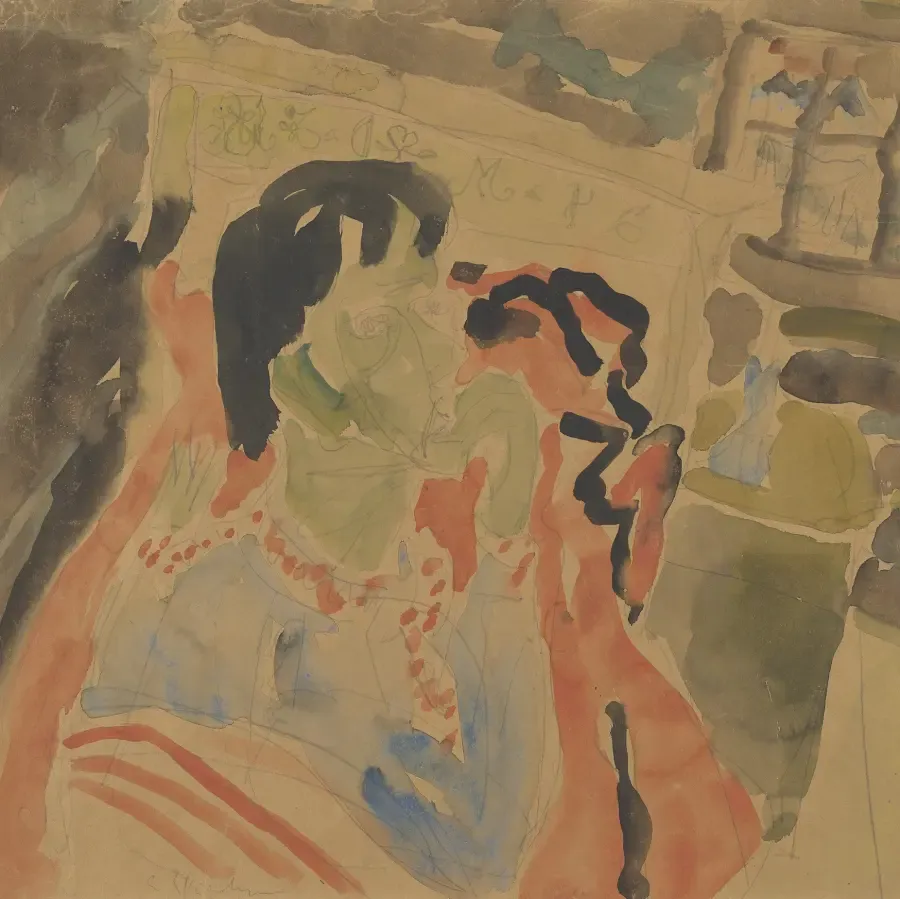
A watercolor by German Expressionist painter Ernst Ludwig Kirchner looted by the Nazis from a Jewish family has been restituted to their descendants, who in turn have donated it to the Virginia Museum of Fine Arts.
The painting, Im Bett liegender Mann (Selbstbildnis), was originally collected by Ludwig and Rosy Fischer—residents of Frankfurt who built one of the most impressive collections of German Expressionist art between 1905 and 1925.
Their collection passed to their sons Ernst and Max Fischer in 1926, the VMFA said in a statement Tuesday announcing the acquisition.
When Adolf Hitler rose to power in 1933, he passed a law that banned “non-Aryans” from holding positions in the civil service, forcing Ernst Fischer to lose his position at the University of Frankfurt. Ernst Fischer left Germany with his half of the art collection in 1934 and settled with his family in Richmond, Virginia.
Max Fischer, however, did not leave Germany until 1935, after the Nazi regime passed the Nuremberg Race Laws that stripped Jewish citizens of their rights. He was only able to take some of the works in his half of the collection, with the rest believed to be stolen. He died in 1954, nine years after the end of World War II.
The VMFA acquired Ernst Fischer’s collection through a gift-purchase agreement with his widow, Anne Fischer, in 2009. The museum has since acquired three other works from the Ludgwid and Rosy Fischer collection, beginning with Kirchner’s painting Sand Hills at Grünau in 2015.
That painting was restituted by the Museum of Modern Art in New York to the descendants of Max Fischer and was acquired by VMFA through a similar gift-purchase arrangement, the museum said in its news release.
Since then, two other works have returned to the Fischer Collection: Taunus Road, also by Kirchner in 2021 and Siblings (Geschwister) by Erich Heckel in 2020.
A representative for the museum told Artnet News that the restitution of Im Bett liegender Mann (Selbstbildnis) came about because the German owners, Annemarie and Günther Gercken, reached out to members of the Fischer family “in the midst of securing the legacy of their private collection.”
“Although they purchased the work in good faith, restitutions over the past several years of other works formerly owned by Max Fischer to the Fischer family led them to the fair and just decision to return the work,” the museum representative said.
It was returned to the Fischer family through the Gerckens’ representatives, S+N Rechsanwälte, in Berlin in July.
The Fischer Collection will receive a major exhibition at the VMFA after the completion of its upcoming expansion and renovation project.
